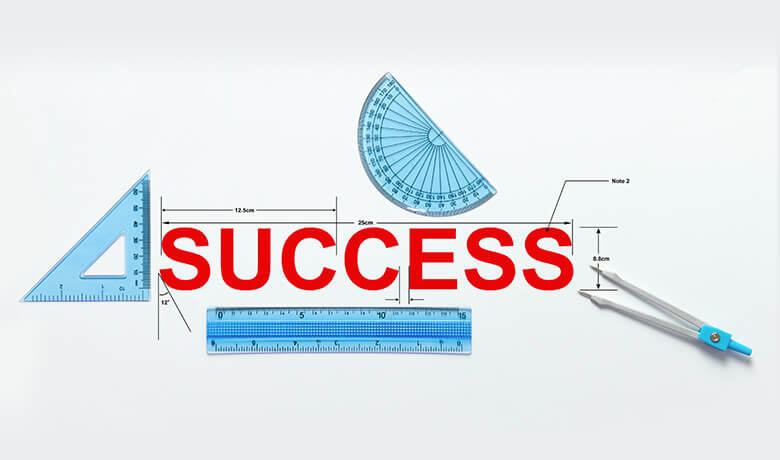Get news, updates, and insights delivered straight to your inbox.
How to Measure the Impact of Marketing Asset Management

You know the famous saying – you can’t manage what you can’t measure. But how do you measure the impact of a discipline like Marketing Asset Management?
Managing materials, their customization, and their distribution is a complicated process, one that has many moving parts and drives improvements in different areas of a business. In fact, the typical customer journey has an average of just over 5 touch points, according to our research, and each touchpoint suffers when content is fragmented.
Definition of Content Fragmentation: Sales and marketing content is fragmented when it is branded poorly, lacks key messages or expresses them incompletely, and/or is incompatible with other content assets
We’ve pulled together some ways to consider tracking and understanding the impact Marketing Asset Management (MAM) is having on your business, as well as how to optimize your process along the way.
Ideally, you’ll choose metrics that show where Marketing Asset Management is working well and where it can be improved, in addition to the impact it has on your business. No single metric is going to be a silver bullet here, but marketers should consider several angles:
- Operating efficiency within Marketing — and beyond
According to Gleanster Research, one of the core goals of Marketing Asset Management is greater operating efficiency. But, “efficiency” can be measured at many different levels, from cost per task to ROI to spend per staff member.
One direct measure of efficiency is time. Workers spend a measurable amount of their day, on average, just searching for the right information. An IDC study reported that 8.8 hours each week is dedicated to the quest for content – equivalent to 52 working days each year.
With a Marketing Asset Management technology properly implemented, marketers spend less time searching for files, or recreating lost assets.
A Marketing Asset Management tool also directly improves the productivity and effectiveness of employees outside of Marketing, including field sales, distributed channel partner networks, franchise owners, print providers, dealers, branch managers and global locations working in regional markets. Anyone who needs access to corporate brand collateral benefits. They’re all made faster by the ability to find what they need when they need it, and empowered to be more effective when they can customize print and digital assets to suit their particular needs.
When these employees can do their customer-facing jobs on-brand, and relevant to their local audience, they contribute to organizational goals of brand consistency, and operational efficiency.
- Revenue growth
In our State and Impact of Content Consistency Report, we (in conjunction with Demand Metric), found that 90% of study participants report their sales and marketing content measurably influences revenue. While it’s difficult to attribute revenue directly to a Marketing Asset Management system, these tools support key marketing functions such as distributing collateral or supporting a specific channel.
It’s no surprise then that 98% of Top Performers report measuring Marketing Asset Management in terms of revenue growth, the most basic measure of business performance. These Top Performers also generate 2-3 times higher local revenue after implementing a Marketing Asset Management technology to take control over branded assets across their organizations.
Inconsistent content has a direct impact on the performance of revenue-generating campaigns, as two-thirds of organizations lose deals because they don’t have the content they need in the marketing and sales process.
- Projects delivered on time/on budget.
Gleanster found that 82% of Top Performers measure Marketing Asset Management by whether projects are delivered on time and on budget.
This performance metric is useful for calculating impact both within an internal marketing team, or external partners involved in the asset creation process. In one study, agency costs were found to be reduced by as much as 75% at organizations who implemented a Marketing Asset Management technology.
Internally, a Marketing Asset Management system ensures timely delivery of content as Marketing teams face fewer one-off content requests from the field. Part of the reason content fragmentation occurs in the first place is that over half the time, marketing is slow in responding to sales team requests for content, so sales team members resort to improvising their own assets.
When responsiveness is better (aided by an on-demand Marketing Asset Management platform), sales and marketing content is found to be more likely to meet the needs of the buying journey, and stay consistent to brand standards.
- Marketing spend as a % of revenue
“The ratio of marketing spend to total revenue is a general measure of marketing effectiveness” according to Gleanster.
Lowering this spend-to-revenue ratio across the board is a measurable way of showing marketing efficiency. A marketing leader who can lower this ratio is simply doing more with less resources – something that can earn trust across the business, or a situation that becomes a necessary reality as marketing budgets are cut.
One strategy for improving content performance without increasing investment is to adopt content personalization. Gartner predicted that by 2018, companies that have “fully invested in all types of personalization” will outsell companies that have not by 20%. That’s a significant advantage.
Content that is personalized is proven to outperform generalized content – one recent study found that 80% of marketers say personalized content is more effective, and our own study proved that personalized content is far more likely to be consistent to brand standards, increasing its performance.
Marketers have discovered the value of personalizing content (90% of companies in our study reported personalizing to some degree), as it does a better job of supporting customers on their buying journeys. Overall, it can contribute to a lower spend-to-revenue ratio as companies seek to do more in marketing with less investment.
- Asset performance
As one of the key functions of Marketing Asset Management technology is to help a company gain insight into materials and their associated campaigns, one effective metric to track is the performance of specific assets with successful campaigns.
This is one, important way to understand what’s working – and what’s not.
Integrating Marketing Asset Management with Marketing Automation (MAP), for example, connects the dots between campaign execution (via email, ads, or social) and the content used to drive results. Doing so with a CRM system means assets can be completely customized using customer or prospect data, impacting personalization and improving performance.
- Utilization metrics
While platform use metrics are not directly related to business impact, they can help you to optimize your use of a Marketing Asset Management tool.
For example, understanding the number of active users, and the percentage of projects or assets managed within the system gives key insight. These metrics can, according to Gleanster, help managers identify groups of users who have not fully adopted the system and find tasks where the system has not been working effectively.
It can also, related to asset performance, illustrate which assets are being utilized by sales teams or field teams, and which aren’t critical to their success.
These metrics are a starting point for understanding the value and impact of Marketing Asset Management. To choose the right Key Performance Indicators for your business, pick those that are:
- Actionable – only collect data you have the ability to take action on.
- Aligned best to company goals – ensure you have what you need to prove your value in context with the business.
- Automated – to an extent, seek to collect as much data as possible in an automated way to save time each month, quarter, or year.
Read our full Benchmark Report here for a deep-dive into the impact of Marketing Asset Management and content fragmentation.


